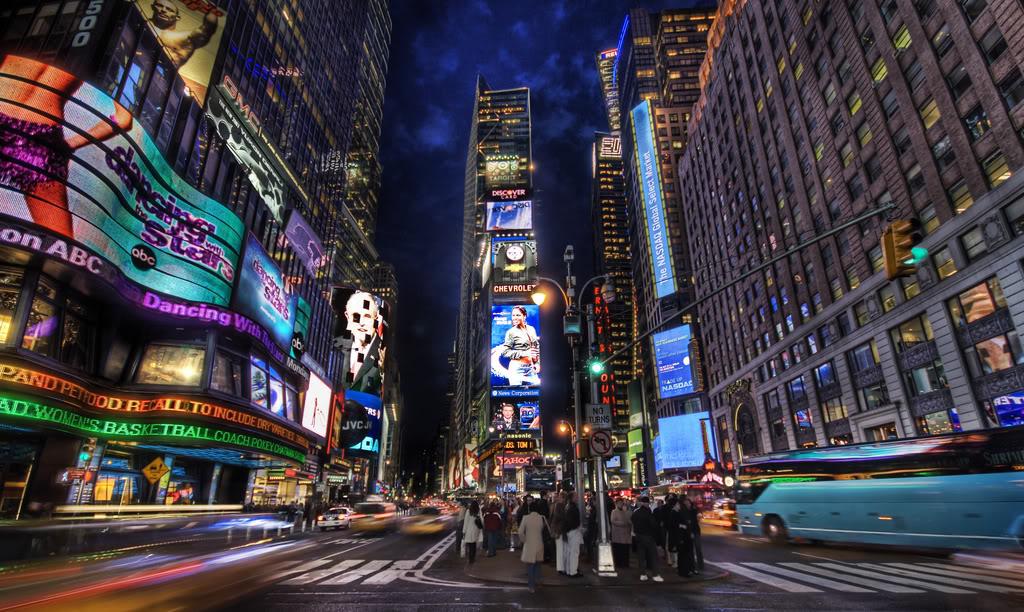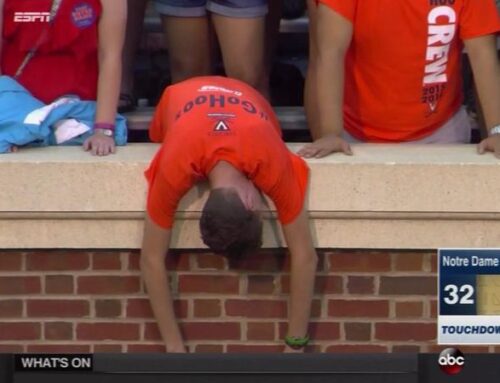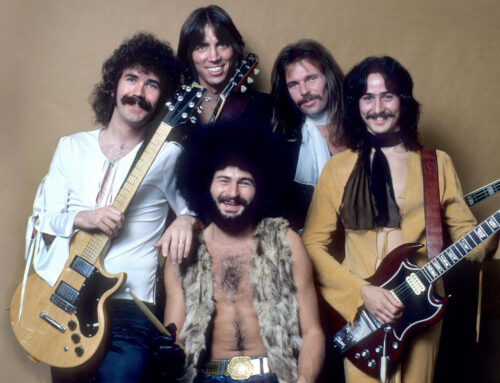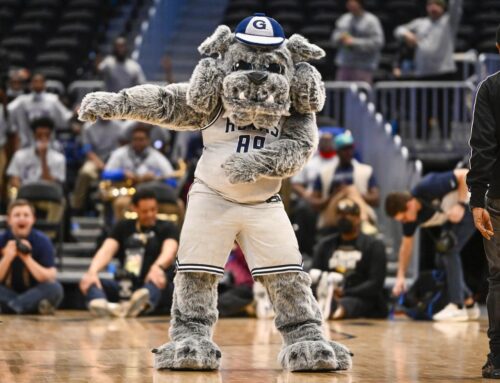For the stretch run of this stroll through Notre Dame’s historical roster, we have a name theme – we’ll look at the biggest names to come out of the biggest cities in the next couple of posts, and then in the final installment we’ll look at Notre Dame’s all-time all-name team. Both lists are as decided by yours truly and yours truly only, because nothing says “election season” like “disenfranchised constituency.”
The Criteria
First, the city dwellers. Keep in mind here that, regrettably, an encyclopedic knowledge of the municipalities composing each major metro area in the United States is not on my long list of positive traits. Nor do I feel particularly compelled to map the hometowns of each of the 2,983 players who appear on the historical roster and gauge whether they fall in a metro area. So, this list is comprised only of those players who hailed directly from the major cities themselves.
The other thing to consider here is that not every major city I looked at had produced a truly memorable player. If you don’t see a city listed here, it means that I didn’t see someone I thought was worth calling out. The standard is moderately high – not just a name I recognize, but someone who at least did something notable in a Notre Dame uniform. Without further ado, then, we will start in Indiana and head east (since I’m riddled with East Coast bias), working clockwise around the country:
The Cities
Indianapolis: There were a number of players to choose from, as you might expect, but none stood out like Derrick Mayes and Zack Martin. Many who saw him play (including me) would put Mayes somewhere in the pantheon of the best receivers ever to play for the Irish. Zack Martin was the 18th player in Notre Dame’s long history to be a two-time captain, the first offensive lineman to earn a bowl game MVP award in 53 years, and the first All-Pro rookie offensive lineman in 65 years.
Detroit: The Motor City’s most famous Irish son is without question Jerome Bettis, who was as near an unstoppable force as any running back Notre Dame has ever had. Bettis is in the pro football hall of fame and sits, very appropriately, at #6 in career rushing yards in the NFL record book. He also relieved himself, as it were, in Steve Spurrier’s Cheerios. Stick it, Steve.
Cincinnati: A solid group to choose from here, but Notre Dame’s all-time leading tackler Bob Crable jumped out pretty clearly. Crable also had a potential game-saving field goal block against Michigan that caused the NCAA to amend the rule book – it seems they frown upon vaulting off teammates. Bunch of wet blankets.
Cleveland: Saved By The Bell star Bob Golic hailed from the Forest City (that name is not a joke, although I’ve been to Cleveland and the word “forest” doesn’t come to mind), and also happens to rank as Notre Dame’s second all-time leading tackler. Cleveland also produced speed back Eric Penick, whose 85-yard score broke USC’s back in the 1973 championship season.
Pittsburgh: From the city where Jerome Bettis cemented his Hall of Fame status came Ray Zellars, another bruising Lou Holtz back. Zellars’s 62-yard touchdown run against Purdue in 1994 was one of my favorite Notre Dame plays in the 23 years that I’ve followed the team closely. Zellars found moderate success in the NFL, tallying over 1,700 yards from scrimmage in a four-year career with the New Orleans Saints.
Philadelphia: The City of Brotherly Love turned out Will Fuller, who, on the off chance you have the short-term memory of a goldfish, just turned in some of the most productive seasons of any Irish wideout ever, became a consensus All-America selection, and was taken in the first round of the NFL draft this year… Wait, no, he wasn’t a consensus All-American – in fact he only made one second team. What were those guys smoking?
Baltimore: Moving down Amtrak’s Northeast Corridor, we find Tom Gatewood, whose name is scattered around Notre Dame receiving records like powdered sugar in a donut factory. Gatewood and Joe Theismann immediately followed Jim Seymour and Terry Hanratty, combining to create a half-decade long aerial attack that would make Mike Leach blush.
Charlotte: Fairly considered a major metro area now thanks to the general population shift towards the South, Charlotte has sent a few players to Notre Dame over the years. There were a couple of respectable candidates, but I settled on Matthias Farley – he came in as a wide receiver, started in a national championship game as a redshirt freshman safety, and closed out his career as a reserve nickelback and team captain, selflessly pounding away at whatever job the team needed him to do. And the 18S ladies tell me he had a great smile, although of course I don’t notice that kind of thing. Honest.
Atlanta: The Big Peach’s Wes Pritchett combined with Frank Stams and Michael Stonebreaker to form the not-so-friendly Three Amigos linebacker unit that anchored the defense for the 1988 national championship team. Pritchett had a cup of coffee in the NFL before moving on to a very successful financial career that has seen him climb the ladder at JP Morgan, where he is currently an executive director.
Jacksonville: Drifting across the Florida-Georgia line, we encounter none other than Louis Nix III, a.k.a. Irish Chocolate, arguably the most lovable big man ever to suit up for Notre Dame. He’s also the largest person I’ve ever seen in a #1 jersey, not that I would tell him that. He was drafted by the Texans but could never quite manage to stay out of coach Bill O’Brien’s doghouse; after being cut in Houston, he’s currently trying to catch on with the Giants. Here’s hoping the big fella can put it all together soon; if it doesn’t work out, though, I think many Irish fans would love to see him get a shot in media. Dude is hilarious.
Miami: Slim pickings from the actual city of Miami, which perhaps isn’t surprising since most of the prep talent is concentrated in the surrounding area. Linebacker Mike Whittington started at linebacker for three seasons, including the 1977 national championship season. That, as they say, is not too shabby.
Tampa: I love the guy, but Gary Godsey’s inclusion here is almost more of a sad-trombone comment on the Bob Davie tenure than anything else. A guy who might’ve developed into an NFL tight end under Holtz, Weis, or Kelly was shuttled between tight end and quarterback by Professor Snotrocket. Godsey made out okay in the end, though; he’s currently a senior vice president for a major commercial real estate firm.
Memphis: All-America defensive end Willie Fry was a frightening bookend with fellow All-American Ross Browner, terrifying opposing quarterbacks on the way to the title in 1977. Fry, Browner, and Luther Bradley were also the first true freshmen to play varsity football at Notre Dame after the NCAA lifted its prohibition on freshman participation.





Uhhh, Rochester, NY? I mean, we got Jarron Jones and Jamir Jones (and no, they’re not related to Maurice Stovall). Let’s not forget the incomparable Honorable Robert Thomas! Surely that’s sufficient for, at least, an honorable mention!
Shout out to western New York! Our fearless leader originally hails from the area (I’ll leave it to him if he wants to get more specific than that), and I have plenty of family connections that way as well… I’ve even been to Rochester for a business trip – no, really! And it didn’t involve Xerox or Kodak! I used to work for H&M, and I went up there to open the Greece Ridge and Eastview stores. Ah, those were the days…
Anyway, back on topic… Rochester isn’t quite “major” enough to make the cut, unfortunately. If it was, the list of cities I looked at, which was already long enough to split into two posts, would triple. I love you guys and all, but that’s a little time intensive.
That said, in appreciation of your contribution here, I will officially give Rochester an OFD Honorable Mention™ award.
*18S Honorable Mention Award
Derp. Old habits die hard.
Internet Points!
Now I’m flipping tables!
Gif work for you guys? I can’t see it, sigh…
Now, I’m confused. Same gif and address but I see yours but not mine. I don’t get it…
I don’t think you’re using the codes. Check the Site Rules page!
Rule change! Got it! Well, let’s see:
Sigh
What are you doing wrong haha?
Dunno, I’ll keep trying later. Don’t wanna spam up the thread with nonsense. But the first try was without the ” ” and the second was with and still nada…
So it’s like this: right? So…Maybe one more try:
Have we never had a player from a metropolitan area west of Memphis? Uh, a few from Los Angeles…no? Lake Dawson was from the Seattle area, I’m pretty sure. Dallas?
I mean, you admit your East Coast bias, but say you’re going to just start there, and work clockwise around the country. I guess your clock broke.
Manti Te’o from Honolulu….Aloha State love.
I continue westward in the next installment. Hang in there.
Okay–so you just need to rewind your watch. Got it.
Also, Te’o isn’t from Honolulu proper, which is the criterion here – he’s from Laie, which is about an hour north of Honolulu, on the opposite side of the island. Reggie Ho, from Kaneohe, is closer, but still not actually from Honolulu.
We’ve had three players total who are from the city itself – E Walter Cabral (1951-1954), DL Jason Ching (1997-1999), and K Stefan Schroffner (1993-1994). You’ll see more about Cabral in the next installment.
Do you, Brendan, do you…
He went to high school at Punahou, which was a 5 minute walk from my house in Manoa, which is in Honolulu. He was “from” Laie, but come on.
Hey now… The historical roster lists his hometown as Laie; I’m not familiar with Hawaii high schools, I don’t have the bandwidth to look up every high school’s actual location, and on top of that I don’t even have the high school for the vast majority of the players on the historical roster. I’m working from a limited data set and with limited time to analyze it.
I’ll make sure Te’o is included in Honolulu in Part 2, though. It’s the least we could do for him.
Ronnie Stanley was a pretty good player from a pretty big city. Why did he not merit consideration?
I was about to blast you for leaving Dallas out(and we all know who is gonna take that honor, last year HOF inductee) but then I saw your comment above. Jets are now cooling
Ha, thanks. Yes, indeed, Tim Brown is my choice from Dallas. Not really a spoiler, that one’s pretty obvious. I’m moving around the country in a vaguely clockwise fashion starting from Indianapolis, so the next installment will start in Louisville before heading through the plains and dipping into Texas, then through the Southwest and up the West Coast, finally finishing up back in Chicago.
Hi. There’s not a “feedback” or “contact” button I can find anywhere so I’m posting this here:
I use my phone for almost all of my browsing. The comments section on here is formatted in a way that makes replies shift right. By the time a comment gets 8 replies, I can no longer see what is said. The page doesn’t let me scroll sideways to read them.
Is there a way a mod (or I) can fix this?
Forgot to add: using an iPhone 6s.
OK – I see what you’re talking about. There are some potential trade-offs to make – we’ll put our heads together behind the scenes and get back to you here about it.
Thanks a ton. No need to respond. If it gets changed, I appreciate it. If it doesn’t, I’ll fire up the laptop. Thanks again for looking into it!
Update: We have a band aid solution in place for the time being. We turned off the responsive design feature, which dynamically changes the design of the site as the screen resolution changes. It’s what all the cool kids are doing to optimize the experience of both desktop and mobile users, but in our case it had that pretty significant problem for mobile users and nested comments.
Sooooo… For the time being, everyone gets the desktop design. Mobile users, that means you’ll have to drag and pinch a bit, but generally things work pretty well and at least this way you can actually read all the comments. We’re working on what we can do to get one comprehensive solution to all our comment needs; what we had in place first was close, but it didn’t highlight new comments. We’re going to try to tweak that to see if we can get there.
We appreciate you
After doing about 45 seconds worth of exhausting research via google, it looks like no one impactful from my hometown of Richmond, VA has made a difference, which is kind of a bummer. Though the recently retired Doug Randolph is from Richmond, and CJ Prosise grew up in nearby Petersburg.
I got a little adrenaline kick when I checked my list and found Vagas Ferguson, then realized he’s from Richmond, IN, not Richmond, VA. Oh well. It’s really too bad about Randolph, if you had asked me a few years ago I would’ve said he had a good shot to make a list like this.
In truth, either Randolph or Prosise is kind of an * anyways, since they went to Woodberry up in Madison County (which is far from Richmond) for their high school, but I would even take that.